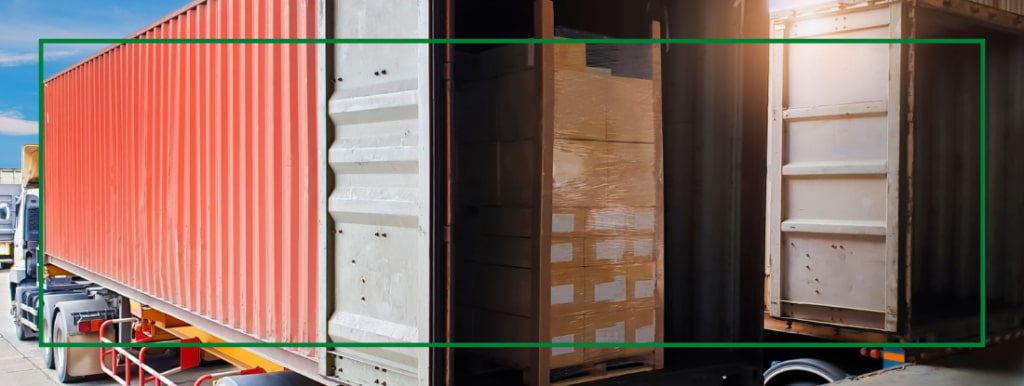
Less-than-truckload (LTL) shipping offers a cost-effective approach to transporting packages along your supply chain. However, this approach is not immune to problems that could have debilitating consequences if left unmanaged. To run a successful business, you need an efficient logistics system that takes common shipping issues into account and makes provision for preventive actions to be taken when necessary. This article highlights five ways to avoid LTL shipping problems to improve your bottom line and stay competitive.
Common LTL Shipping Problems
There are various problems that businesses often encounter when using LTL shipping services. Examples include missing freight, delivery delays, damaged products, hidden charges, ambiguous documentation, poor contract terms, and limited carrier networks. Understanding the causes behind these issues and having the ability to identify warning signs will help you implement strategies to keep their occurrence to the barest minimum. The section below discusses efficient ways to avoid LTL shipping problems to keep your business running smoothly.
Invest in a Transportation Management System (TMS)
Investing in a transportation management system (TMS) helps businesses simplify their logistics procedures and efficiently manage daily shipping processes. It assists business owners in selecting the most suitable shipping mode for a package and the best carrier based on several factors, including the LTL quote, distance, and expected delivery time. A TMS enables companies to manage all their transportation-related needs from a single platform and provides real-time visibility into events happening at each stage along the supply chain. It also optimizes delivery routes for multi-leg carriers so businesses can make the most of the available shipping infrastructure.
Some TMS systems offer global trade management functionality by providing information on customs regulations and tariffs. Using a transportation management system will reduce logistics errors, shorten delivery times, and improve overall customer satisfaction.
Properly Package and Label LTL Shipments
Proper packaging and labelling are essential to ensuring that your shipments arrive at their destinations in perfect condition. Here are some things to pay attention to when preparing your packages for shipping:
- Invest in quality packaging materials to protect your products during transit and save you the stress and costs of dealing with broken or damaged goods.
- Use cushioning materials like foam peanuts, bubble wrap, molded fiber trays, and cardboard dividers to fill the spaces between items in a box.
- Only use four-way wooden pallets (not plastic or corrugated cardboard) with a sturdy deck of boards covering them.
- Stack the heaviest packages on the bottom of the pallet and the lightest on top to keep it stable.
- Put a slip sheet between every third layer to ensure even weight distribution.
- Turn the stack of boxes into a unified package by shrink-wrapping the pallet.
- Ensure that you label each pallet with all the required details, such as your phone number and the recipient’s address and contact details.
- Include additional labels for any special handling requirements, such as “This end up” or “Fragile,” so shipping workers know how to properly handle the items and reduce the likelihood of damage.
Improve Contract Negotiation Resources
To avoid paying exorbitant amounts for LTL or FTL shipping, improving the terms of your shipping contract through negotiation is essential. Ensure that you understand the exact rates the carrier offers by weight and size. You should also discuss the duration of the agreement, how missing or damaged packages will be handled, and the presence of accessorial charges that may be added to base rates, such as sorting fees, fuel surcharges, fees for handling fragile or hazardous items, etc. The goal of negotiation is to get the best rate possible, not necessarily the lowest one, as you also have to consider the carrier’s operational costs.
Learn More About Freight Audit & Payments
25% of freight bills contain an error that can negatively affect your profit margin. Freight audit involves examining and verifying freight bills for accuracy. Learning more about freight audits and payment helps you avoid paying more than you should for shipping. After receiving the bill for your shipment, you should check the shipper and carrier information, Bill of Lading (BOL), tracing number, shipment weight, and price. Ensure that there are no unusual additional fees on the invoice and verify the price of every service you are charged for.
Expand Your Carrier Network
Freight carriers keep the supply chain moving by facilitating the movement of goods from the manufacturers to the final consumers. However, many LTL shipping problems are caused by inadequacies on the part of these logistics companies. Expanding your carrier network can help you avoid several shipping-related issues by giving your diverse options to choose from based on track record, transport routes, customer service, shipment type, costs, delivery strategy, and transit times. Different carriers have varying strengths within their operating regions. Having a multi-carrier network allows you to play to these strengths and offer personalized shipping services to your customers all year round.
Find Reliable Carriers with GoShip
GoShip erases all your LTL shipping worries by connecting you with thousands of professional freight carriers capable of meeting your logistics needs in a hassle-free manner. Our self-service platform assists small to mid-sized businesses in finding affordable shipping solutions without requiring a broker’s services. Visit the GoShip website and get an instant FTL or LTL freight quote using our free online quotation tool.